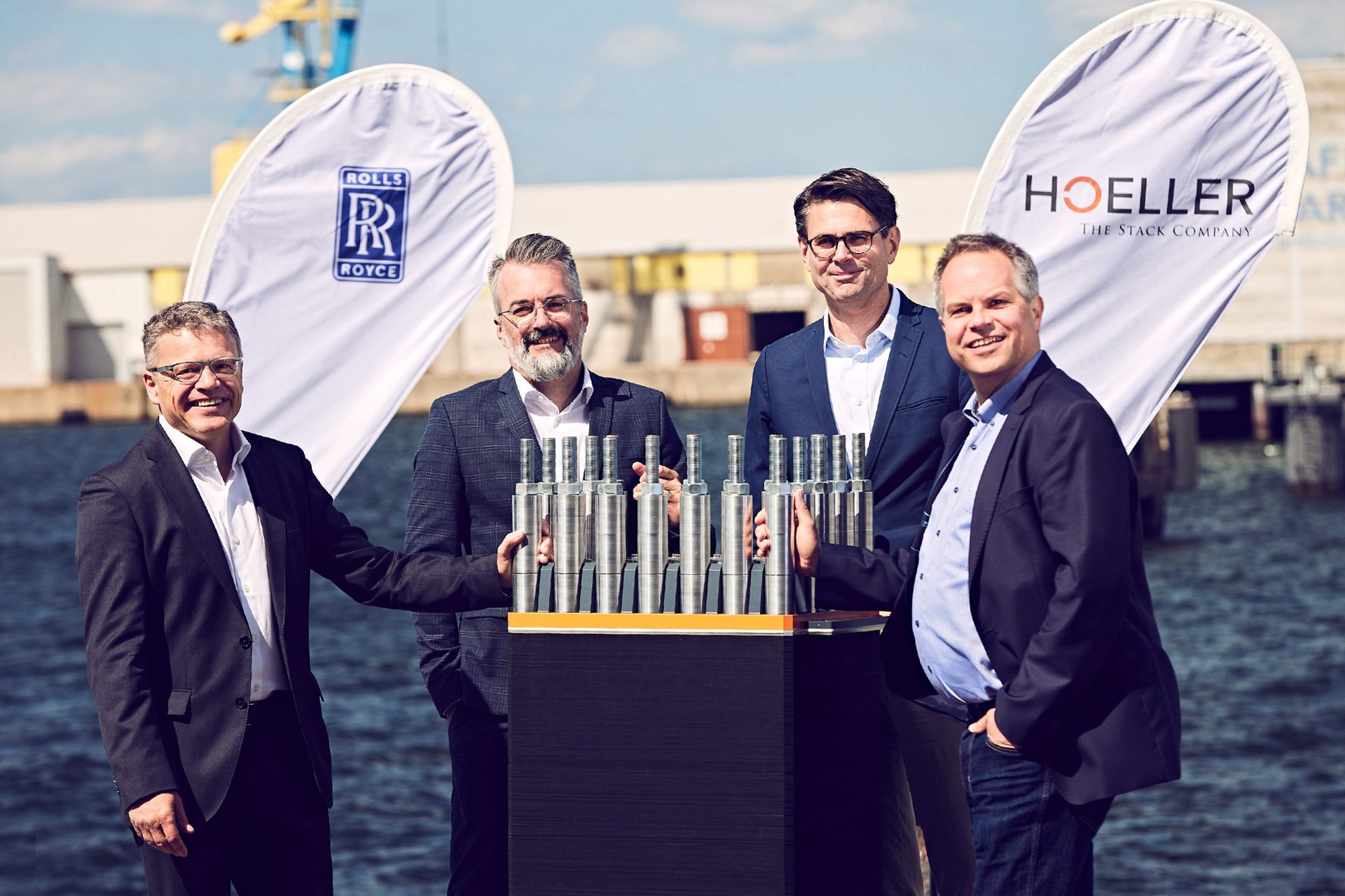Click Here to View This Page on Production Frontend
Click Here to Export Node Content
Click Here to View Printer-Friendly Version (Raw Backend)
Note: front-end display has links to styled print versions.
Content Node ID: 419616
Rolls-Royce this week announced a significant investment in hydrogen electrolysis technology to support plans for its new Mtu range of electrolyzers to generate hydrogen, which the aircraft engine maker says is “the fuel of the future.” While hydrogen is viewed as an increasingly promising alternative to fossil fuels for air transport, its use poses significant infrastructure challenges.
The group’s Power Systems division is acquiring a 54 percent majority stake in Hoeller Electrolyzer, a German company that is already developing an electrolyzer under the brand name Prometheus that it says will provide a cost-effective method of producing hydrogen. Hoeller Electrolyzer’s Prometheus stack will form the basis of Rolls-Royce’s Mtu electrolysis systems.
Electrolyzers use electricity to break down water into its two components, hydrogen and oxygen. This process is called electrolysis. The resulting hydrogen can be used in fuel cells and hydrogen-powered engines, as well as in the production of synthetic drop-in fuels. The electrolysis process takes place within so-called “cells” confined by plate-shaped electrodes, and hundreds of cells can be stacked together to produce larger amounts of hydrogen gas more efficiently.
Most of the hydrogen gas produced in the world today is created using other processes that involve fossil fuels, such as natural gas. Electrolysis of water is a more environmentally friendly way to generate hydrogen, although the process is not necessarily carbon-neutral, depending on the source of electricity. “Green” hydrogen can be made with electrolyzers that run on renewable energy, such as solar or wind power, which does not produce carbon dioxide.
“By developing our own Mtu electrolyzers and by taking a majority stake in Hoeller Electrolyzer, we are methodically growing our hydrogen portfolio and securing access to this fascinating technology, which is not a pipe dream and has great market potential,” said Otto Preiss, COO and chief technology officer of Rolls-Royce Power Systems.
“This will enable us to supply complete hydrogen solutions and make a significant contribution to protecting the climate,” he added. “Our complete hydrogen solutions will enable customers to store renewably produced energy in the form of hydrogen for use as and when required, or for further processing or onward sale.”
Founded in 2016, Hoeller Electrolyzer is one of the few companies working to develop highly efficient stacks of electrolysis cells that contain a polymer electrolyte membrane. “Particularly high efficiency is promised by special surface technologies for the bipolar plates, which significantly reduce the use of expensive precious metals platinum and iridium as catalysts, as well as increased output pressure,” Rolls-Royce officials said in their June 29 announcement.
“Our stack is going to produce hydrogen at a price not previously thought possible,” said Stefan Höller, the managing director of Hoeller Electrolyzer.
Rolls-Royce has already begun developing its Mtu electrolyzer, which uses Hoeller Electrolyzer’s Prometheus stacks. The company plans to test the technology at its validation center in Friedrichshafen sometime next year, and an initial customer project is scheduled to begin in 2024, Rolls-Royce officials said.
